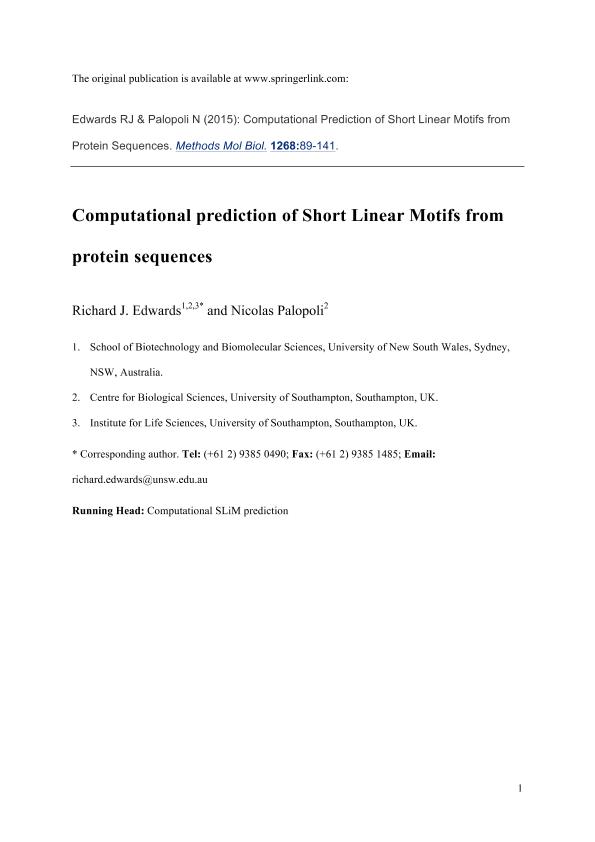Artículo
Computational prediction of short linear motifs from protein sequences
Fecha de publicación:
01/2015
Editorial:
Springer
Revista:
Methods in molecular biology (Clifton, N.J.)
ISSN:
1940-6029
Idioma:
Inglés
Tipo de recurso:
Artículo publicado
Clasificación temática:
Resumen
Short Linear Motifs (SLiMs) are functional protein microdomains that typically mediate interactions between a short linear region in one protein and a globular domain in another. SLiMs usually occur in structurally disordered regions and mediate low affinity interactions. Most SLiMs are 3-15 amino acids in length and have 2-5 defined positions, making them highly likely to occur by chance and extremely difficult to identify. Nevertheless, our knowledge of SLiMs and capacity to predict them from protein sequence data using computational methods has advanced dramatically over the past decade. By considering the biological, structural, and evolutionary context of SLiM occurrences, it is possible to differentiate functional instances from chance matches in many cases and to identify new regions of proteins that have the features consistent with a SLiM-mediated interaction. Their simplicity also makes SLiMs evolutionarily labile and prone to independent origins on different sequence backgrounds through convergent evolution, which can be exploited for predicting novel SLiMs in proteins that share a function or interaction partner. In this review, we explore our current knowledge of SLiMs and how it can be applied to the task of predicting them computationally from protein sequences. Rather than focusing on specific SLiM prediction tools, we provide an overview of the methods available and concentrate on principles that should continue to be paramount even in the light of future developments. We consider the relative merits of using regular expressions or profiles for SLiM discovery and discuss the main considerations for both predicting new instances of known SLiMs, and de novo prediction of novel SLiMs. In particular, we highlight the importance of correctly modelling evolutionary relationships and the probability of false positive predictions.
Archivos asociados
Licencia
Identificadores
Colecciones
Articulos(SEDE CENTRAL)
Articulos de SEDE CENTRAL
Articulos de SEDE CENTRAL
Citación
Edwards, Richard J.; Palopoli, Nicolás; Computational prediction of short linear motifs from protein sequences; Springer; Methods in molecular biology (Clifton, N.J.); 1268; 1-2015; 89-141
Compartir
Altmétricas




